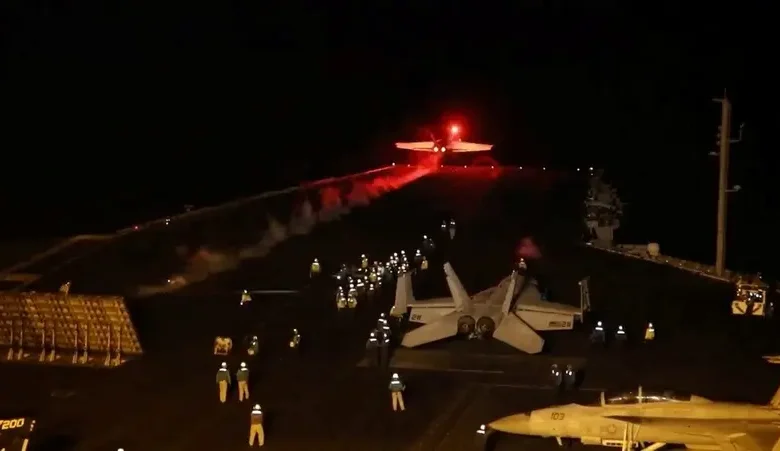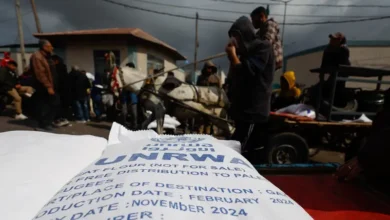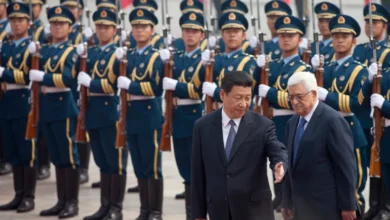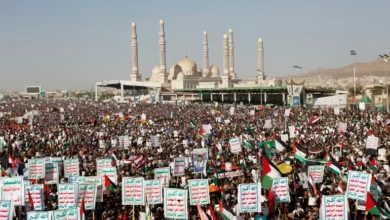One year later, US military campaign has done little to stop Houthi attacks

A year ago, the US launched a campaign aimed at halting the Houthi attacks on ships in the Red Sea. Since then, the Houthis have intensified both the frequency and sophistication of their assaults. They are now nearly daily targeting US military vessels and Israel.
Last month, a US guided missile cruiser in the region mistakenly fired on an American F/A-18, forcing the pilot and a weapons system officer to eject. Although they sustained minor injuries, the incident could have led to a significant crisis for the Biden administration.
“For just over a year now, Washington has failed to turn off Houthi firepower, both against Israel and in the Red Sea. The Houthis are the only proxy of the Islamic Republic [of Iran] to have paraded and to have used anti-ship ballistic missiles,” Behnam Ben Taleblu, the senior director of the Iran program at the Washington-based Foundation for Defense of Democracies, told Al Arabiya English.
The Houthis began their maritime attacks following the October 7 Hamas attack on Israel, which triggered an Israeli military response that devastated much of Gaza. The Iran-backed Houthis claimed their attacks were a show of solidarity with Palestinians in Gaza.
Critics argue that the Biden administration’s softened stance on Iran has emboldened Tehran and its long-supported proxies, which it equips with arms and funding. There’s also concern that the administration has refrained from ordering preemptive strikes, opting instead for defensive or retaliatory operations.
“We are seen as defensive and reactive, and we have not taken sufficient measures to preserve the long-standing national interest of freedom of navigation,” said retired Gen. Joseph Votel, the former head of the US military’s operations in the Middle East. He advocated for a more comprehensive strategy that combines military power with economic, diplomatic, and informational measures to undermine the Houthis, particularly targeting the support they receive from Iran and their control over the population. “This approach would require more resources and certainly a greater degree of political will than we have been willing to exert thus far,” he said.
Votel’s assessment aligns with comments made by General CQ Brown, Chairman of the Joint Chiefs of Staff last year, who emphasized that addressing Houthi attacks requires broader actions beyond military responses, including countering smuggling operations and enhancing sanctions.
“To be able to address [the Houthi attacks], it’s going to take broader measures than just the military,” Gen. Brown said at the time, stressing the importance of countering smuggling operations and enhancing sanctions.
Current administration officials assert that they have not lifted sanctions and have maintained pressure on Iran. However, reports indicate that these sanctions have not been as rigorously enforced since President Biden took office in 2020.
In one of his earliest foreign policy actions, Biden targeted traditional Gulf allies of the US by lifting the terror designation applied to the Houthis in the final days of the Trump administration. Last year, he ordered the redesignation of the Houthis as a Specially Designated Global Terrorist (SDGT) entity but stopped short of relisting them as a Foreign Terrorist Organization (FTO). The administration argued that these designations could hamper the delivery of humanitarian aid to Yemen, which is facing one of the world’s worst humanitarian crises.
Although US officials claimed that redesignating the Houthis would pressure them to “turn away from Iran,” the group has continued its attacks against US military vessels in the Red Sea, as well as commercial ships navigating the area.
Senator Ted Cruz recently reintroduced legislation to designate the Houthis as an FTO and to impose additional sanctions on the group’s top three leaders. The Biden administration did not reinstate the SDGT designation for these leaders last year. Cruz criticized the “politically-driven decision” to remove the Houthis from the terror blacklist, stating, “That decision was an obvious and catastrophic mistake from the very beginning. It enabled the Houthis to resume their assaults on civilians in Yemen, target Israel and our Gulf allies, and consistently attack commercial ships and American servicemembers in the Red Sea over the last year.”
The Houthis have persistently targeted Israel with long-range ballistic missiles and drones, some of which have been intercepted by US troops stationed in Israel in recent months.
As the Houthi attacks continue, they have been draining US coffers to the tune of billions of dollars for the deployment of aircraft carrier strike groups and the use of missiles and other ammunition needed to repel the attacks.
As these Houthi attacks continue, they are costing the US billions of dollars, primarily for the deployment of aircraft carrier strike groups and the missiles and ammunition needed to counter these attacks. Estimates suggest that operating a carrier strike group costs under $9 million daily. The US has consistently maintained at least one carrier strike group in the region.
A study published by Brown University last September estimated that the total expenditure amounted to at least $4.86 billion.
On Tuesday, the commander of the US Naval Surface Forces said that the Navy had fired around 400 munitions in its efforts against the Houthis, The War Zone reported. The breakdown, according to the report, included 120 SM-2 missiles, 80 SM-6 missiles, 160 rounds from the five-inch main guns of destroyers and cruisers, and 20 Evolved Sea Sparrow Missiles (ESSM) and SM-3 missiles.
Estimates for each cost are as follows: $2.1 million for an SM-2, $3.9 million for an SM-6, $2 million for each ESSM, and $9.7 million for each SM-3 Block IB or $28 million for SM-3 Block IIA.
The Houthis also claimed to have shot down several American MQ-9 Reaper drones, some of which have been confirmed by the US military. The drone is also used by the CIA, which does not comment on such operations or incidents. Each MQ-9 costs around $30 million.
Ben Taleblu, like Votel, said the central failure of the US-led maritime coalition was rooted in the Biden administration’s preference for “deterrence by denial, rather than deterrence by punishment.
“They’re merely trying to catch or intercept or thwart the vast majority of Houthi attacks.” He suggested the US return fire against the point of origin and Houthi command and control centers for every single attack launched by the group. “They would have a qualitatively different outcome,” Ben Taleblu said.
Asked what the Pentagon chief’s recommendations would be to the Trump administration or his successor on what to do, Pentagon Press Secretary Maj. Gen. Pat Ryder said, he wouldn’t get into any advice or conversations the secretary may or may not have with the incoming administration. “I mean, clearly, we’ve been focused on degrading and disrupting their capability. You highlight the fact that they have continued to conduct strikes, but I would also highlight the fact that their capability has been significantly diminished,” Ryder said in response to a question from Al Arabiya English this week.
Ryder added that US forces would continue collaborating with the international community to address the challenges posed by the Houthis in the Red Sea and the broader region, particularly regarding freedom of navigation and the safety of mariners in that area.
Washington has conducted numerous strikes against the Houthis—some in coordination with the United Kingdom and others unilaterally—at an increased frequency in recent months. This came after Defense Secretary Lloyd Austin pledged to intensify pressure and attacks on the Houthis towards the end of 2024.










